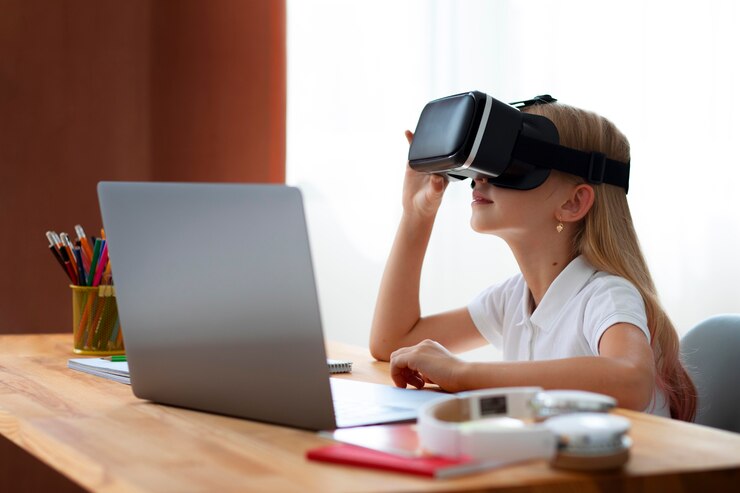Transforming Education
Virtual Reality (VR) is redefining the paradigms of education, offering immersive experiences that turn learning into an engaging adventure. Where technology and innovation are increasingly valued in the educational environment, VR emerges as a promising tool to enrich teaching and learning.
Traditional education, often criticized for its passive and unidirectional approach, is being revitalized by VR, which introduces an active, student-centered learning model. With VR, students are no longer mere spectators; they become active participants in a dynamic educational scenario.

Immersion and Engagement
VR creates virtual environments that simulate reality, allowing students to explore content in a deep and intuitive way. This immersion generates a level of engagement that is difficult to achieve with conventional teaching methods. For example, history students can relive historical events, while future architects can walk through buildings that are still on paper.
Experiential Learning
VR enables experiential learning, where students can interact with study material in a practical way. This is particularly beneficial in fields such as medicine and engineering, where practice and experimentation are essential. VR allows complex simulations without the risks or costs associated with practical activities in the real world.
Teaching Personalization
Each student has their own learning style, and VR can be adapted to meet these individual needs. Educators can personalize VR experiences for different learning styles, ensuring that all students can benefit from this technology.
Overcoming Barriers
VR also holds the capacity to equalize the availability of high-standard education. Students from remote regions or with limited resources can have enriching educational experiences without leaving home. VR eliminates geographical and social barriers, making knowledge more accessible to everyone.
Challenges and Considerations
Despite its many benefits, the implementation of VR in education faces challenges. Issues such as hardware costs, content development, and teacher training are barriers that need to be overcome. In addition, it is crucial to ensure that VR is used in a complementary, not substitutive, way to traditional teaching.

Virtual Reality is transforming education, opening doors to a world of unlimited possibilities. In Brazil, with its passion for innovation and thirst for knowledge, VR has the potential to revolutionize teaching, making it more interactive, personalized, and accessible. As we overcome the challenges and integrate this technology into our educational system, we are not only improving the way we learn, but also how we experience and interact with the world around us.
VR in education is more than a trend; it is an evolution that is shaping the future of learning. And at the heart of this transformation is the promise of teaching that is as engaging as it is effective, as personalized as it is universal. It’s an exciting journey that is just beginning, and Brazil is ready to lead the way.
Did you like this topic? See more content about: Virtual Reality
Source: linkedin





